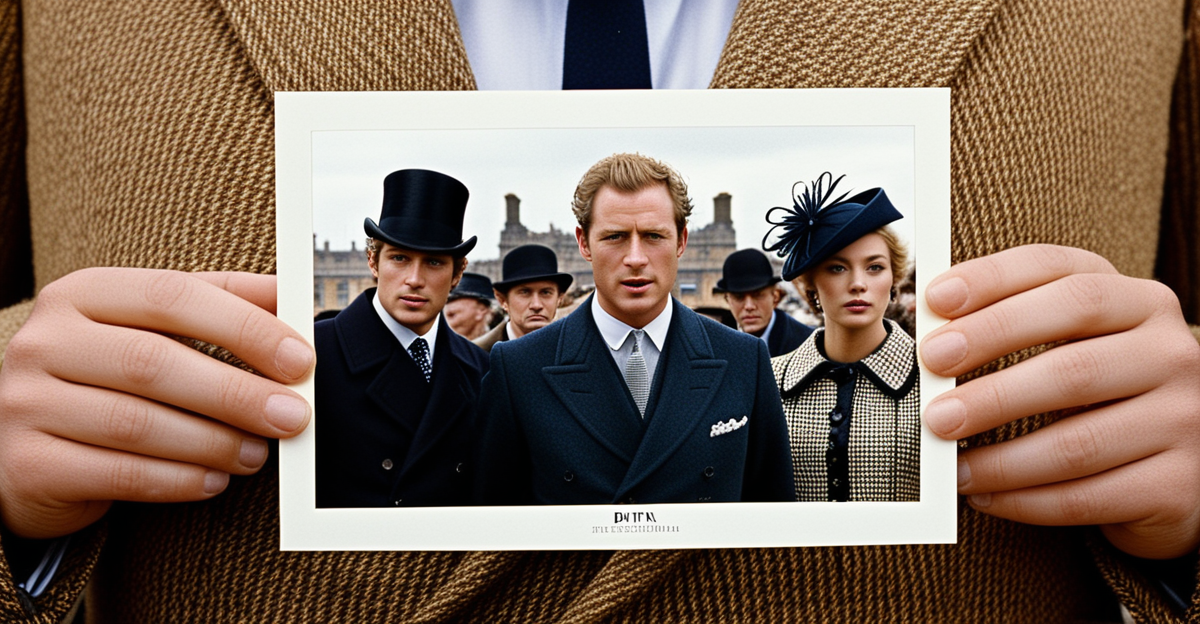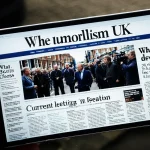Defining Iconic British Fashion Moments
Understanding what makes a British fashion moment truly iconic requires examining several key criteria. Primarily, an iconic British fashion moment is characterized by its lasting impact on both British fashion history and global style. These moments set trends that persist beyond their initial appearance, often reshaping how fashion is perceived domestically and internationally.
A defining moment in British fashion must resonate culturally, symbolizing more than just clothing. It reflects societal changes, innovation, or a bold new attitude. For example, how Vivienne Westwood’s punk aesthetics in the 1970s challenged the norms and became a global movement is a classic indicator of an iconic moment. These events often originate on the streets, runways, or through influential public figures, making a significant statement that transcends time.
Also to see : How Can the UK Women’s Fashion Industry Innovate for Future Trends?
The timeline of such moments spans from the mod subculture of the 1960s, which revolutionized British street style, to the dramatic runway shows masterminded by designers like Alexander McQueen. Each era offers unique contributions, such as the glam rock fashion of the 1970s or the minimalism of the 1990s, all adding layers to the rich tapestry of British fashion history.
In summary, iconic British fashion moments are recognized by their:
Also read : How Can British Women Enhance Their Style with Sustainable Fashion Choices?
- Enduring influence on style and culture
- Reflection of historical and social movements
- Introduction or popularization of innovative looks that become symbolic over time
This framework helps to identify and appreciate the defining moments that have shaped British fashion’s distinguished global reputation.
Royalty’s Enduring Fashion Influence
British royalty fashion has long been a powerful driver in shaping both domestic and global style trends. Royal style moments, especially those involving public celebrations like royal weddings, have consistently captured wide attention and sparked fashion movements beyond the palace walls. These occasions often showcase ensembles that become instantly iconic, influencing designers and the general public alike.
Princess Diana fashion remains one of the most profound examples of royalty’s impact on fashion. Her unique ability to blend elegance with approachability made her wardrobe choices highly influential. From her famous wedding dress to her off-duty casual looks, Princess Diana fashion introduced styles that resonated culturally and socially, challenging traditional notions of royal attire while inspiring millions worldwide. Her wardrobe was not simply a collection of clothes but a vehicle for communicating personality and progressive values.
Similarly, Queen Elizabeth II fashion has left a lasting legacy on British designers and the fashion industry at large. The Queen’s consistent and recognizable style, marked by tailored coats, bright colors, and signature hats, has become synonymous with dignity and continuity. Her sartorial choices have encouraged designers to respect tradition while innovating within that framework. Moreover, the Queen’s fashion has helped elevate British craftsmanship, ensuring British fashion history remains rich and esteemed.
Together, the enduring influence of British royalty fashion underscores how royal style moments act as pivotal defining moments in fashion, intertwining heritage with evolving trends. These royal fashion cues ripple through seasons and decades, reaffirming the monarchy’s role as a cornerstone of British style culture.
Revolutionary Designers Who Changed Fashion
British fashion designers have long been at the forefront of innovation, with figures like Vivienne Westwood and Alexander McQueen standing out as true pioneers. Vivienne Westwood’s contribution to British fashion history is marked by her bold introduction of punk fashion, which revolutionized not only style but also cultural attitudes in the 1970s. Her designs challenged the status quo, using clothing as a form of rebellion, which became one of the most defining moments in British fashion. Westwood’s fusion of historical elements with provocative aesthetics reshaped global fashion narratives, embedding British fashion firmly on the international stage.
Alexander McQueen further transformed British fashion through his avant-garde runway moments, blending theatricality with technical mastery. McQueen’s shows became defining moments that pushed boundaries, exploring themes of identity, culture, and mortality. His work elevated British fashion designers to a new level of global respect, demonstrating how runway presentations could be both artistic and commercially influential. McQueen’s legacy continues to inspire countless designers, reinforcing the importance of innovation and creativity within British fashion history.
Beyond these iconic figures, other influential British fashion designers have contributed across decades, each adding unique dimensions to the evolving landscape. Their creative visions have expanded the definition of British fashion, combining tradition with forward-thinking concepts. Together, these designers have established a robust foundation that informs British fashion’s dynamic presence and its enduring impact on domestic and international style trends.
Memorable Red Carpet and Runway Moments
British runway shows have consistently delivered iconic red carpet looks that define not only British fashion history but also influence global style trends. Events like London Fashion Week serve as pivotal stages where designers translate their visions into unforgettable moments, setting new standards season after season. These shows often blend innovation with British heritage, creating runway presentations that captivate international audiences and press alike.
One standout aspect of British fashion shows is how they embrace theatricality and storytelling, often pushing creative boundaries. This approach has led to memorable runway moments that become talking points far beyond the event itself, effectively shaping the future of fashion. Designers showcase collections that mix avant-garde elements with wearable style, making these moments significant defining moments for British fashion and its global reputation.
In parallel, British celebrities frequently make powerful style statements on red carpets at major events, reinforcing the country’s influential fashion culture. Their choices often spotlight British designers, highlighting the versatility and creativity of local fashion houses. These high-profile appearances amplify the reach of British fashion, making red carpet looks an essential channel for visibility and cultural impact.
Together, London Fashion Week and red carpet showcases function as dynamic platforms where British fashion history is both celebrated and propelled forward, continuously redefining what makes a moment truly iconic in the fashion world.
Influential Cultural Shifts and Street Style
British street style has consistently played a crucial role in defining iconic British fashion moments, reflecting broader fashion movements and cultural shifts. The Swinging London era of the 1960s, with the mod subculture at its heart, marked a seminal moment. This subculture, characterized by sharp tailoring, bold patterns, and a youthful spirit, resonated globally and positioned British fashion as a symbol of innovation and rebellion. The mod look was not merely a style but a cultural movement that influenced music, attitudes, and lifestyle, making it a defining moment in both British fashion history and pop culture.
Later, the rise of punk and new wave fashion in the 1970s further underscored how British youth subcultures could reshape fashion narratives. Originating on UK streets, punk fashion—pioneered by figures like Vivienne Westwood—brought a raw, do-it-yourself aesthetic that challenged societal norms and traditional fashion. This movement emphasized individuality and anti-establishment sentiments, drastically impacting global style. It also illustrated how street-level innovation often precedes and inspires runway trends.
These influential cultural shifts demonstrate that British street style is a dynamic force, creating defining moments that ripple through time. By continuously evolving through various subcultures, British fashion movements have maintained their relevance and ongoing influence in international fashion scenes, proving that the street remains a foundational source of inspiration.
Fashion and Media: Shaping Public Perception
British fashion media has played a pivotal role in cementing iconic British fashion moments by amplifying their reach and impact. Through influential fashion magazines, editorials have introduced and celebrated emerging styles, designers, and trends, shaping public perception. These publications often serve as gatekeepers, curating what becomes recognized as a defining moment within British fashion history. By featuring innovative designers and showcasing striking imagery, they translate fashion into accessible cultural narratives that resonate widely.
Televised fashion moments further enhanced the visibility of British fashion by bringing runway shows and style events directly into homes. This accessibility allowed audiences to witness British runway shows and iconic red carpet looks in real time, increasing the immediacy and cultural significance of these occasions. Broadcast coverage of events such as London Fashion Week has turned runway spectacles into must-see media events, translating fleeting collections into lasting fashion legends.
Additionally, British fashion icons featured prominently in media have reinforced the national style identity. Their presence in editorials, television, and public appearances creates recurring defining moments that embed themselves in popular culture. This symbiotic relationship between media and fashion has sustained the enduring influence of British style, ensuring that British fashion history remains vibrant and relevant in both domestic and global dialogues.






